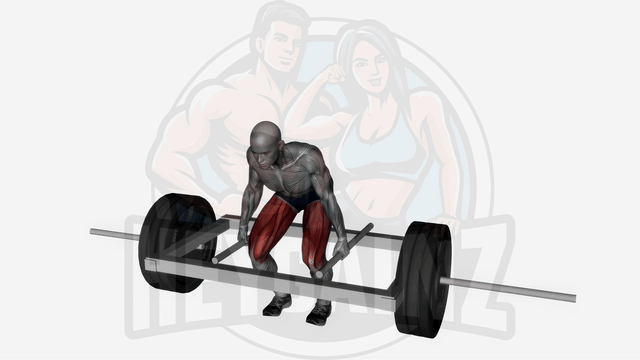
Instructions:
- 1Stand inside a trap bar and grab its rods by leaning forward, bending your knees, and taking your hips backward.
- 2Raise the bar by straightening your knees and leaning back into an upright position.
- 3Hold for a while then return to the initial position, and repeat.
Tips:
- Keep your back straight and avoid slouching.
- Keep your arms straight and avoid folding them while raising the bar.
- Avoid breath-holding and maintain a smooth breathing pattern.
Understanding the Trap Bar Deadlift
The trap bar deadlift, also known as the hex bar deadlift, is a popular strength training exercise that targets multiple muscle groups, making it an excellent addition to any workout routine. Unlike the traditional deadlift, the trap bar deadlift allows for a more neutral grip and can be easier on the lower back, making it a preferred alternative for many fitness enthusiasts.
Muscles Worked
This compound movement primarily targets the glutes, hamstrings, and quadriceps, while also engaging the trapezius and forearm muscles. By utilizing a trap bar, lifters can maintain a better posture throughout the lift, which can enhance muscle engagement and reduce the risk of injury.
Benefits of the Trap Bar Deadlift
- Improved lifting mechanics due to the trap bar’s design.
- Reduced strain on the lower back compared to conventional deadlifts.
- Versatility in training; can be used for strength, power, or hypertrophy workouts.
- Suitable for all fitness levels, from beginners to advanced lifters.
Form and Technique
When performing the trap bar deadlift, focus on the following tips to ensure proper form:
- Stand in the center of the trap bar, with feet shoulder-width apart.
- Grip the handles with a neutral grip, keeping your hands at your sides.
- Engage your core and maintain a straight back throughout the lift.
- Push through your heels as you lift the bar, extending your hips and knees simultaneously.
- Lower the bar back to the ground by bending at the hips and knees while maintaining control.
Trap Bar Deadlift vs. Conventional Deadlift
The trap bar deadlift vs. conventional deadlift debate often centers around ease of use and safety. Many lifters find the trap bar positioning more comfortable, as it allows for a more upright torso and reduces strain on the lower back. This makes it an excellent option for individuals who may be new to weightlifting or who have pre-existing back issues.
Standards and Calculators
For those looking to track their progress, understanding trap bar deadlift standards can be beneficial. Utilizing a trap bar deadlift max calculator can help you determine your lifting capacity and set realistic goals. Engaging in discussions on platforms like Reddit can provide valuable insights and personal experiences from fellow lifters.
Whether you're seeking a trap bar deadlift alternative or aiming to refine your form, incorporating this exercise can lead to significant strength gains and overall fitness improvement.